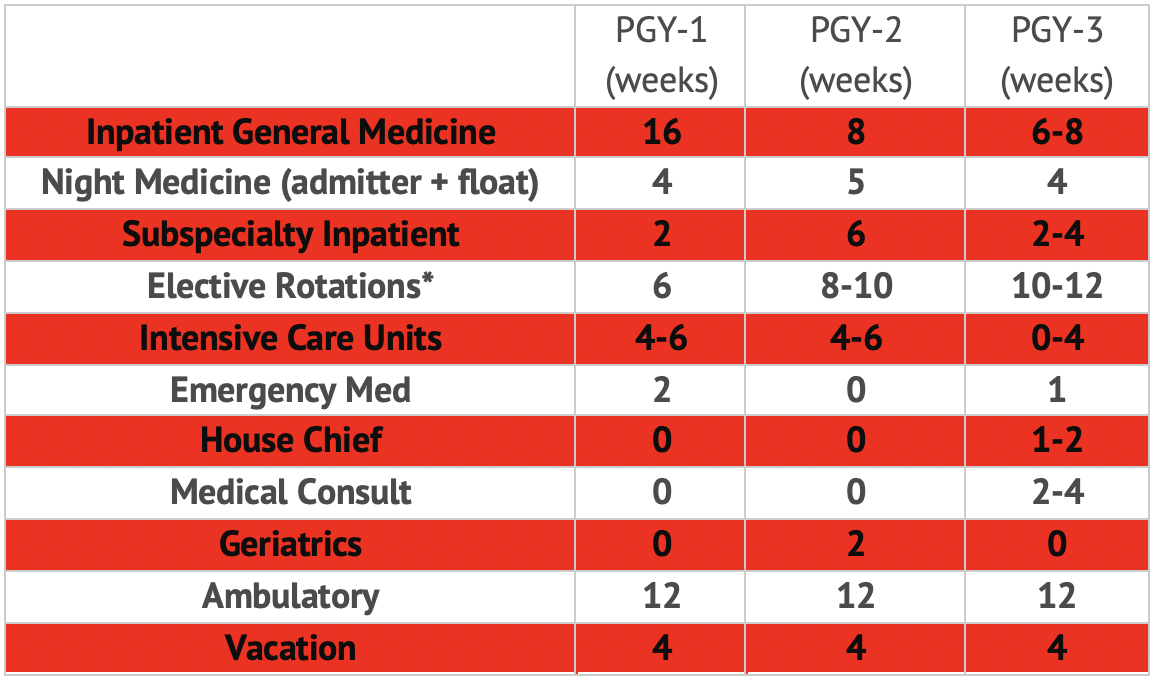At Temple, we utilize a 6+2 block structure for the categorical resident schedule. In this schedule, residents attend six weeks of inpatient medicine, electives, or vacation, followed by 2 weeks of ambulatory continuity clinic. All rotations are 1-4 weeks in duration, so residents will usually experience a mix of wards, ICU, nights, ED, electives, or vacation during their 6-weeks between ambulatory blocks, with most wards, nights, and ICU rotations being 2 weeks in duration. There is a two-week holiday block in December where each resident has one week of service and one week of vacation.
This block structure separates inpatient from outpatient responsibilities, allowing for residents to focus on inpatient tasks while in the inpatient setting and outpatient tasks in the outpatient setting. While residents are expected to cover their own outpatient electronic in-baskets on some inpatient rotations (wards and electives), any complex patient needs can be referred to a resident’s outpatient “Firm” group for assistance. Residents appreciate that the +2 ambulatory block allows for a regularly scheduled change in pace from inpatient rotations, and that they are guaranteed at least one (and usually two) fully protected weekends when they are on ambulatory block.
The 6+2 structure creates four “Pods”, named after the local North Philadelphia streets (Lehigh, Allegheny, Ontario, Tioga). The block structure encourages the formation of close family-like relationships to form between Pod residents as they rotate together on many rotations. Pod residents arrange social events during their ambulatory blocks and Pod friendships often become the backbone of the Temple residency experience. While preliminary residents do not rotate through the outpatient internal medicine clinic, they are assigned to Pods and are preferentially assigned elective rotations during their Pod’s ambulatory block so that they can easily participate in Pod social events.
A general outline of the Temple Internal Medicine Residency experiences is provided below. Please note that this is an approximate guidance, and may change throughout a resident’s three years, additionally individual residents may have variances depending on career interests and programmatic changes and availability.

*Elective rotations also include experiences in neurology, addiction medicine, and palliative care.
